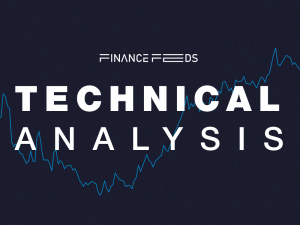Fed, FDIC, and OCC publish guidance for banks regarding crypto liquidity risks
The statement focuses on certain sources of funding from crypto-asset-related entities may pose heightened liquidity risks to banking organizations due to the unpredictability of the scale and timing of deposit inflows and outflows.

The Board of Governors of the Federal Reserve System (Federal Reserve), the Federal Deposit Insurance Corporation (FDIC), and the Office of the Comptroller of the Currency (OCC) have issued a statement on the liquidity risks presented by certain sources of funding from crypto-asset-related entities, and some effective practices to manage such risks.
The agencies added that the statement does not create new risk management principles. Instead, banking organizations should apply existing risk management principles.
Highlighting the key liquidity risks associated with crypto-assets and cryptoasset sector participants that banking organizations should be aware of, the statement focuses on certain sources of funding from crypto-asset-related entities may pose heightened liquidity risks to banking organizations due to the unpredictability of the scale and timing of deposit inflows and outflows.
———————————————————-
Deposits placed by crypto entities and stablecoin reserves pose liquidity risks
• Deposits placed by a crypto-asset-related entity that are for the benefit of the crypto-asset-related entity’s customers (end customers). The stability of such deposits may be driven by the behavior of the end customer or crypto-asset sector dynamics, and not solely by the crypto-asset-related entity itself, which is the banking organization’s direct counterparty. The stability of the deposits may be influenced by, for example, periods of stress, market volatility, and related vulnerabilities in the crypto-asset sector, which may or may not be specific to the crypto-asset-related entity. Such deposits can be susceptible to large and rapid inflows as well as outflows, when end customers react to crypto-asset-sector-related market events, media reports, and uncertainty. This uncertainty and resulting deposit volatility can be exacerbated by end customer confusion related to inaccurate or misleading representations of deposit insurance by a crypto-assetrelated entity.
• Deposits that constitute stablecoin-related reserves. The stability of such deposits may be linked to demand for stablecoins, the confidence of stablecoin holders in the stablecoin arrangement, and the stablecoin issuer’s reserve management practices. Such deposits can be susceptible to large and rapid outflows stemming from, for example, unanticipated stablecoin redemptions or dislocations in crypto-asset markets.
More broadly, when a banking organization’s deposit funding base is concentrated in crypto-asset-related entities that are highly interconnected or share similar risk profiles, deposit fluctuations may also be correlated, and liquidity risk therefore may be further heightened.
Fed, FDIC, and OCC outline effective risk management practices
In light of these heightened risks, it is important for banking organizations that use certain sources of funding from crypto-asset-related entities, such as those described above, to actively monitor the liquidity risks inherent in such funding sources and establish and maintain effective risk management and controls commensurate with the level of liquidity risks from such funding sources.
Effective practices for these banking organizations could include, for example:
• Understanding the direct and indirect drivers of potential behavior of deposits from crypto-asset-related entities and the extent to which those deposits are susceptible to unpredictable volatility.
• Assessing potential concentration or interconnectedness across deposits from cryptoasset-related entities and the associated liquidity risks.
• Incorporating the liquidity risks or funding volatility associated with crypto-assetrelated deposits into contingency funding planning, including liquidity stress testing and, as appropriate, other asset-liability governance and risk management processes.
• Performing robust due diligence and ongoing monitoring of crypto-asset-related entities that establish deposit accounts, including assessing the representations made by those crypto-asset-related entities to their end customers about such deposit accounts that, if inaccurate, could lead to rapid outflows of such deposits.
In addition, banking organizations are required to comply with applicable laws and regulations. For insured depository institutions this includes, but is not limited to, compliance with brokered deposits rules, as applicable, and Consolidated Reports of Condition and Income (also known as the Call Report) filing requirements









